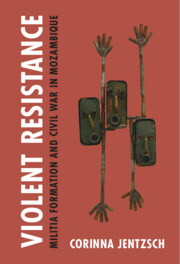Book contents
- Violent Resistance
- Cambridge Studies in Contentious Politics
- Violent Resistance
- Copyright page
- Dedication
- Contents
- Figures
- Tables
- Acknowledgments
- Abbreviations
- Additional material
- 1 Introduction
- 2 Third Actors and Civilian Agency
- 3 Intervention, Autonomy, and Power in Polarized Societies
- 4 A War over People
- 5 People Tired of War
- 6 The Diffusion of Repertoires of Collective Action
- 7 The Power of a Vaccine
- 8 Conclusion
- Appendix Data Collection and Analysis
- References
- Index
- Books in the Series
- References
References
Published online by Cambridge University Press: 13 January 2022
- Violent Resistance
- Cambridge Studies in Contentious Politics
- Violent Resistance
- Copyright page
- Dedication
- Contents
- Figures
- Tables
- Acknowledgments
- Abbreviations
- Additional material
- 1 Introduction
- 2 Third Actors and Civilian Agency
- 3 Intervention, Autonomy, and Power in Polarized Societies
- 4 A War over People
- 5 People Tired of War
- 6 The Diffusion of Repertoires of Collective Action
- 7 The Power of a Vaccine
- 8 Conclusion
- Appendix Data Collection and Analysis
- References
- Index
- Books in the Series
- References
Summary
- Type
- Chapter
- Information
- Violent Resistance , pp. 193 - 212Publisher: Cambridge University PressPrint publication year: 2022
- Creative Commons
- This content is Open Access and distributed under the terms of the Creative Commons Attribution licence CC-BY-NC 4.0 https://creativecommons.org/cclicenses/



